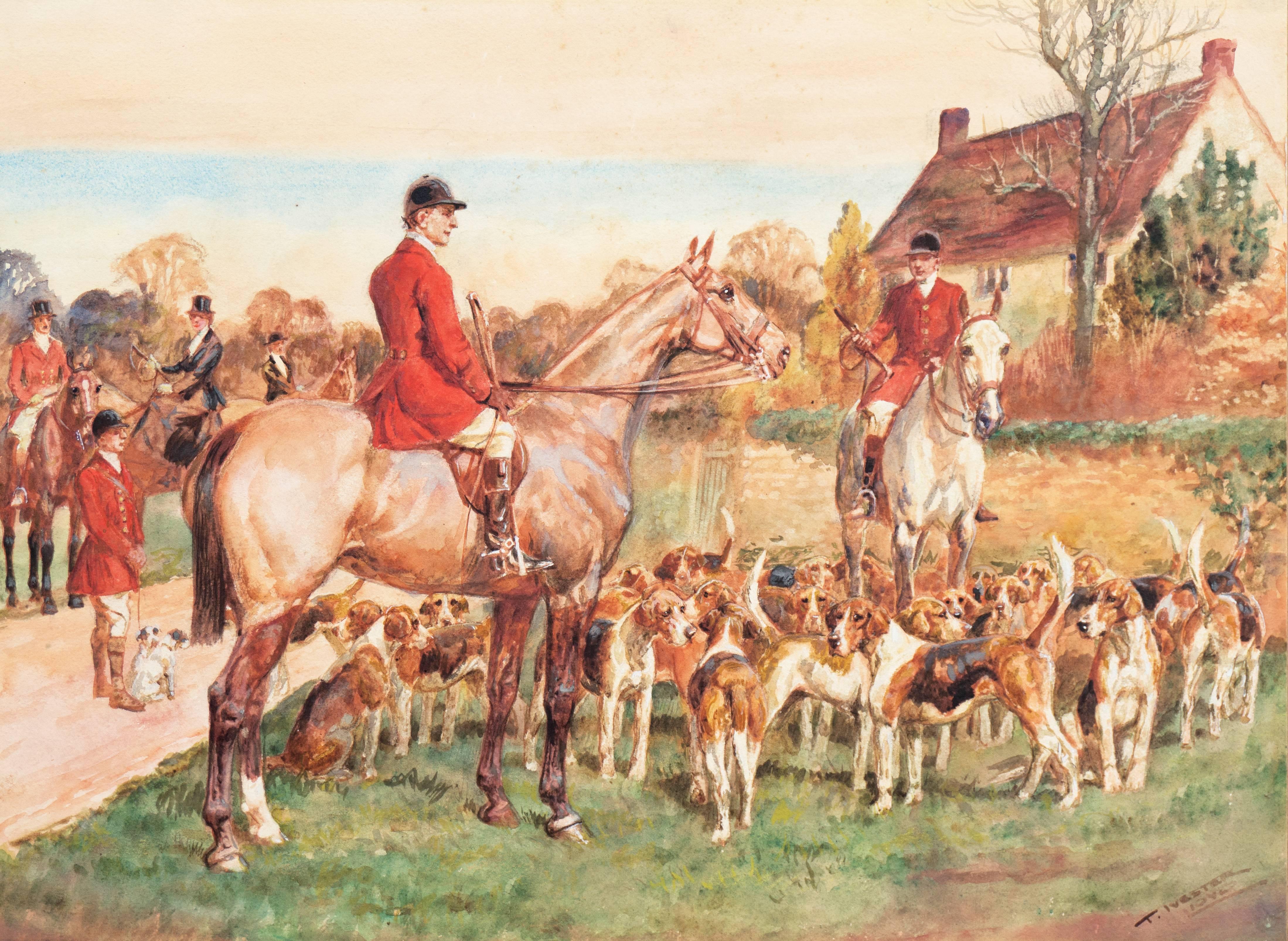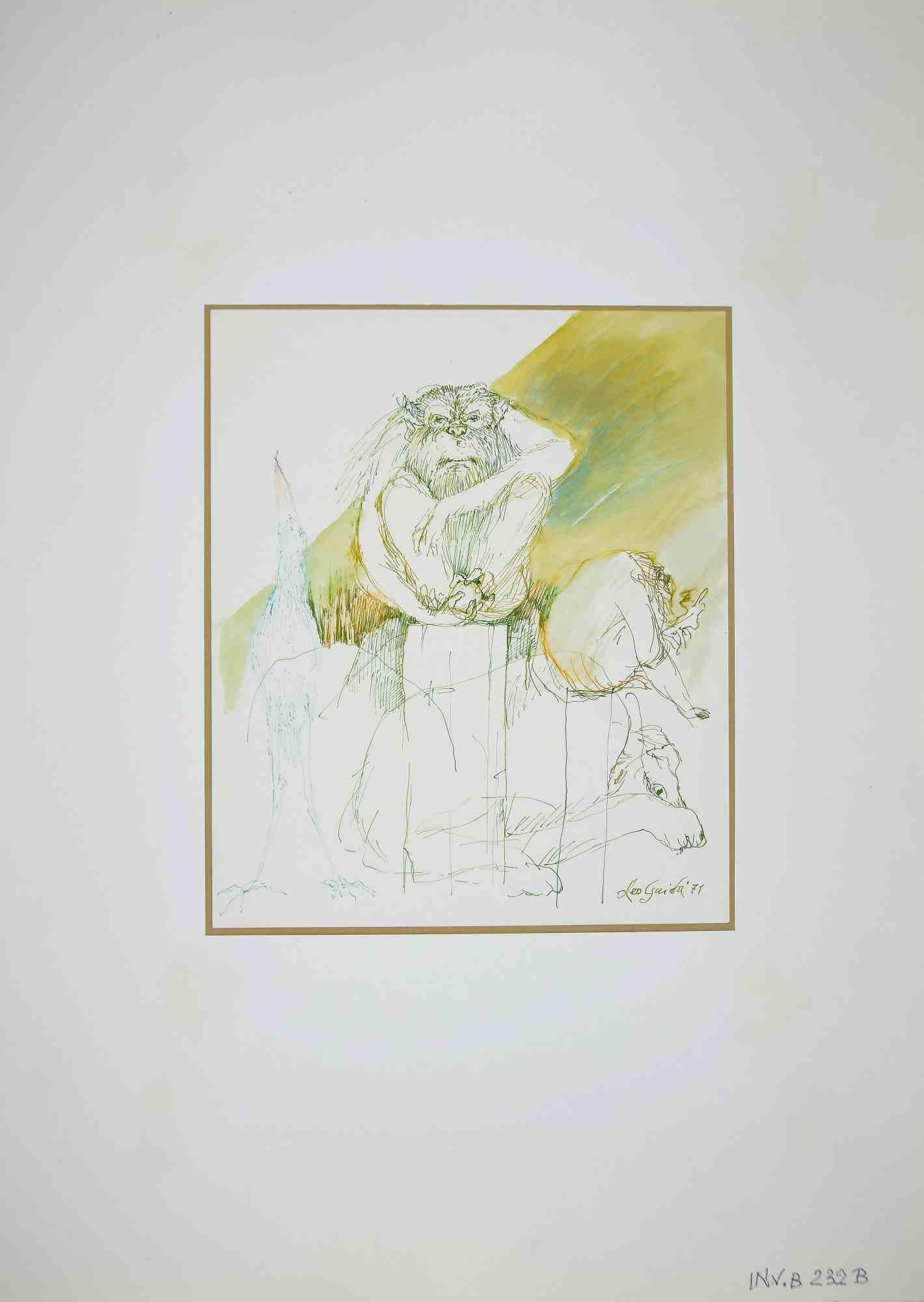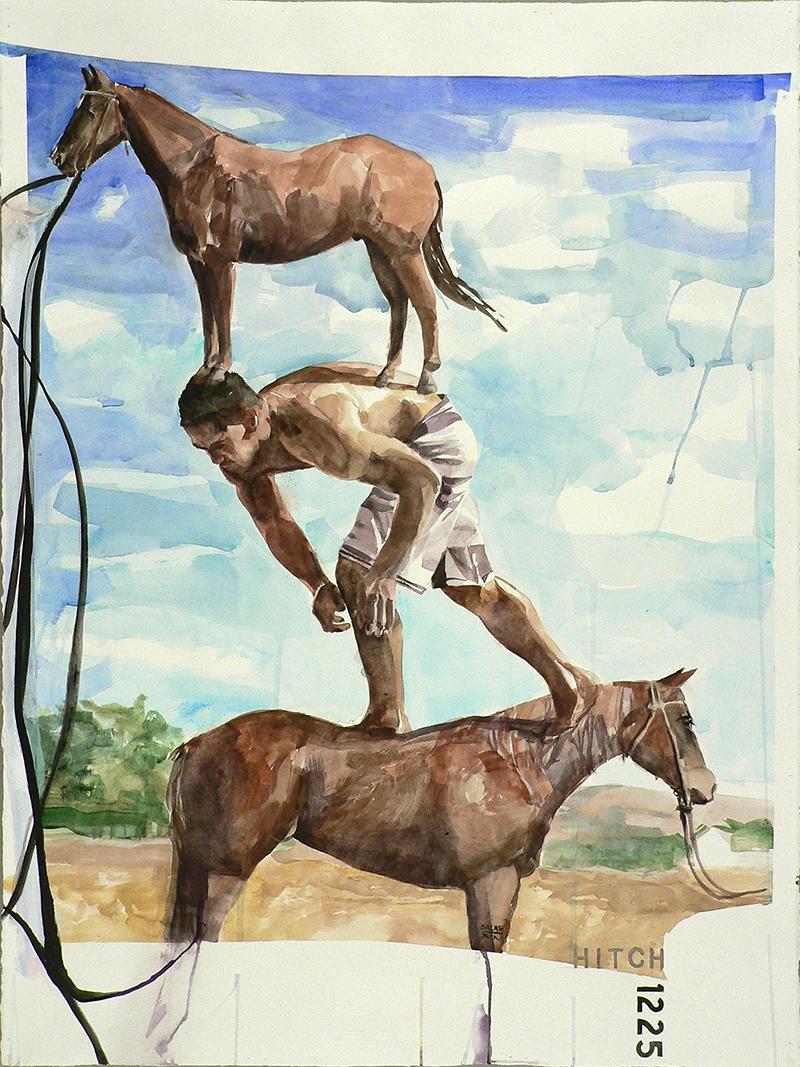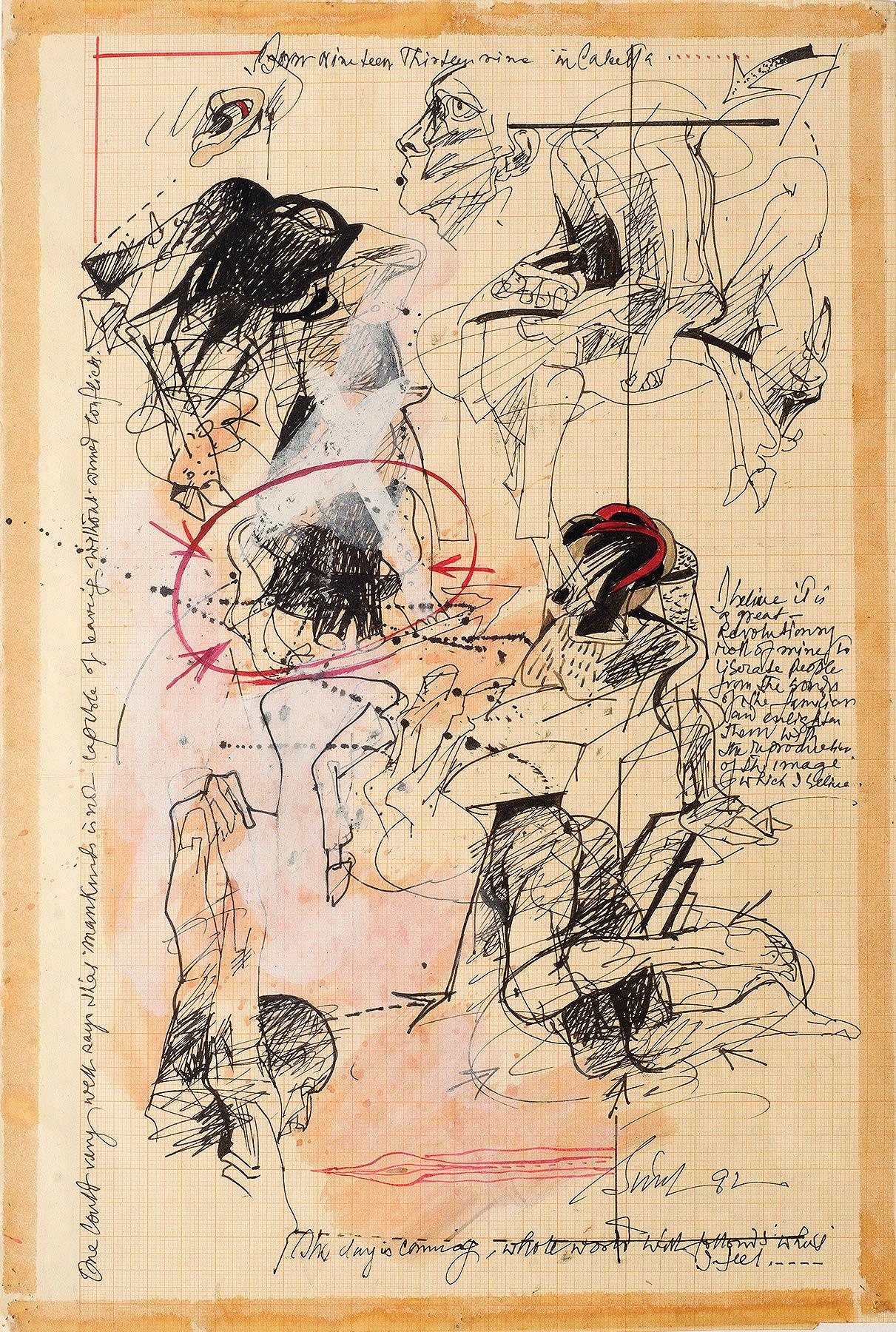Items Similar to Etching - Lady Animal, Pastel Watercolor and Acrylic Anthropomorphic Bunny
Want more images or videos?
Request additional images or videos from the seller
1 of 8
Ana MayEtching - Lady Animal, Pastel Watercolor and Acrylic Anthropomorphic Bunny2012
2012
About the Item
Bold in color and whimsy etching colored with watercolor, pastel and acrylics features an anthropomorphized female bunny, posing in Playboy style. Signature at bottom right by artist Ana May, 2012. This piece is part of a series. Displayed on a white mat with a gold border. Fits a standard-size frame. Archival plastic sleeve and Certificate of Authenticity included. Artwork, 10.5" H x 7.5" W; mat, 20" H x 16" W.
- Creator:Ana May (Mexican)
- Creation Year:2012
- Dimensions:Height: 20 in (50.8 cm)Width: 16 in (40.64 cm)Depth: 0.1 in (2.54 mm)
- Medium:
- Period:
- Condition:
- Gallery Location:Houston, TX
- Reference Number:
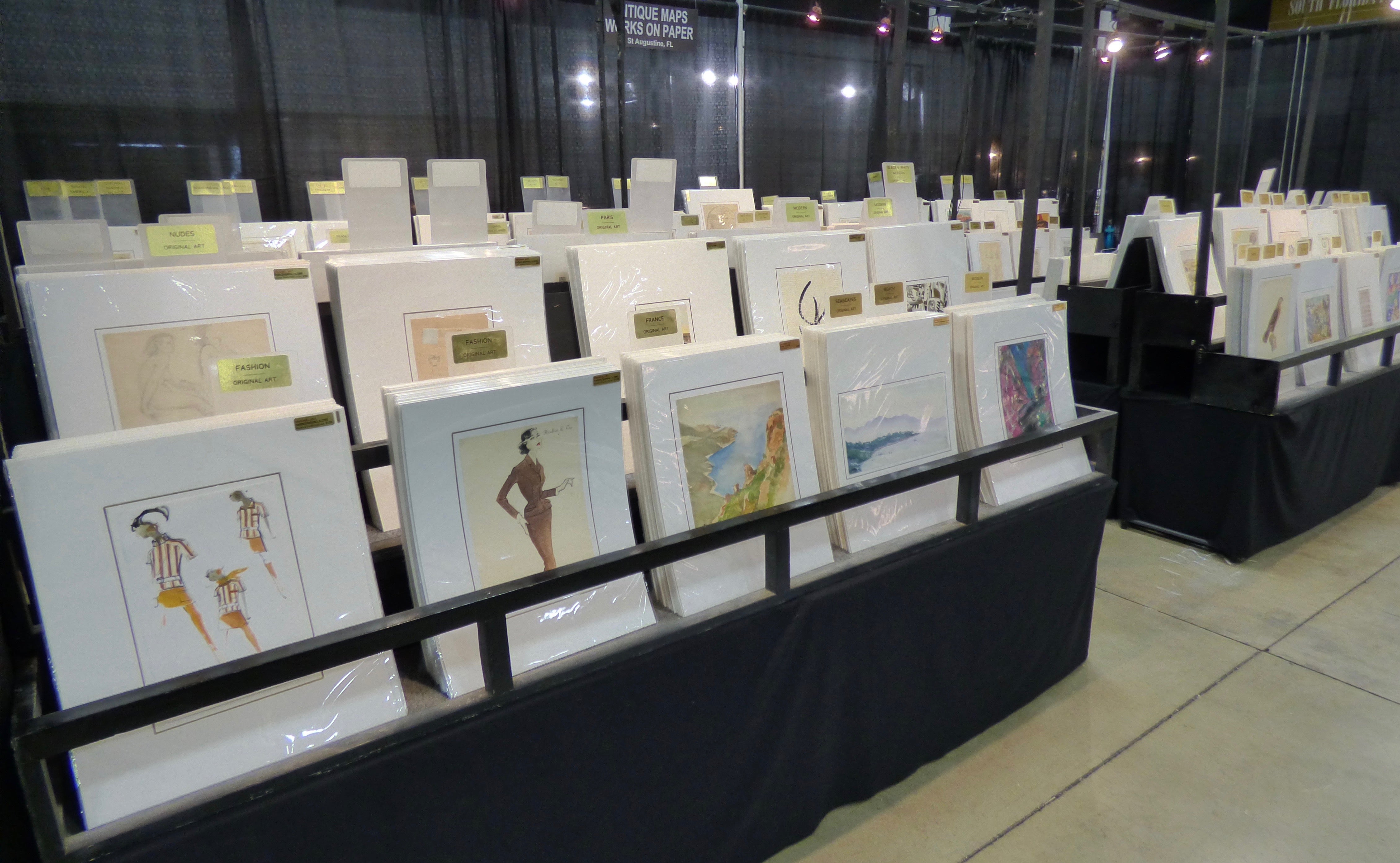
About the Seller
5.0
Platinum Seller
These expertly vetted sellers are 1stDibs' most experienced sellers and are rated highest by our customers.
Established in 2001
1stDibs seller since 2015
1,027 sales on 1stDibs
- ShippingRetrieving quote...Ships From: Houston, TX
- Return PolicyA return for this item may be initiated within 7 days of delivery.
More From This SellerView All
- Watercolor Bullfight Painting - The MatadorLocated in Houston, TXAn abstract, almost dreamlike vision of a matador during a bullfight - next to a wounded bull - by painter and sculptor, Magdalena Reinharez. During her stay in Granada, Spain, Reinharez became fascinated with the bullfight: the matador...Category
20th Century Modern Animal Drawings and Watercolors
MaterialsPaper, Watercolor
- Etching - The Lioness Pastel Watercolor and Acrylic Anthropomorphic LionessBy Ana MayLocated in Houston, TXBright and lively etching colored with watercolor, pastel and acrylics of an anthropomorphic lioness-woman by Mexican artist Ana May, 2012. Signed lower right. Original artwork on p...Category
21st Century and Contemporary Animal Prints
MaterialsPastel, Watercolor, Acrylic, Etching, Paper
- Etching - Lady Animal, Pastel Watercolor and Acrylic Anthropomorphic DogBy Ana MayLocated in Houston, TXBold in color and whimsy, this etching colored with watercolor, pastel and acrylics by Ana May, 2012 features an anthropomorphized female dog, donning painted nails and a blonde wig....Category
2010s Other Art Style Animal Drawings and Watercolors
MaterialsEtching, Watercolor, Pastel, Acrylic, Paper
- Etching - Manly Moose, Pastel Watercolor and Acrylic Anthropomorphic MooseBy Ana MayLocated in Houston, TXBold in color and whimsy, etching colored with watercolor, pastel and acrylics by Ana May, 2012 features an anthropomorphized moose, styled like a basketball player. Signature at bot...Category
2010s Other Art Style Animal Drawings and Watercolors
MaterialsPastel, Acrylic, Etching, Paper, Watercolor
- Etching - Cat Woman Pastel Watercolor and Acrylic Anthropomorphic CatBy Ana MayLocated in Houston, TXBright and lively etching colored with watercolor, pastel and acrylics of an anthropomorphic cat-woman by Mexican artist Ana May, 2012. Signed lower right. Original artwork on paper...Category
21st Century and Contemporary Other Art Style Animal Prints
MaterialsPastel, Watercolor, Etching, Acrylic, Paper
- Etching - Gorilla Guy Pastel Watercolor and Acrylic Anthropomorphic GorillaBy Ana MayLocated in Houston, TXBright and lively etching colored with watercolor, pastel and acrylicsc of an anthropomorphic gorilla by Mexican artist Ana May, 2012. Signed lower right. Original artwork on paper ...Category
21st Century and Contemporary Other Art Style Animal Drawings and Waterc...
MaterialsAcrylic, Ink, Paper, Pastel, Etching
You May Also Like
- 'The Meet', English Edwardian Fox Hunting, Equestrian Watercolor, Horses, BeagleBy Thomas Ivester LloydLocated in Santa Cruz, CASigned lower right, 'T. Ivester Lloyd' for Thomas Ivestor Lloyd (English, born 1873) and painted circa 1900. This Liverpool-born artist spent most of his life in and around Sheringt...Category
Early 1900s Realist Animal Drawings and Watercolors
MaterialsPaper, Pastel, Ink, Watercolor
- Animals in the Fields - Ink and Watercolor Drawing - Late 19th centuryBy Edouard-Jacques DufeuLocated in Roma, ITAnimals in the fields is an original modern artwork realized in the late 19th Century. Mixed colored ink, watercolor and pastels on brown paper glued on paper. Unreadible signature...Category
Early 20th Century Modern Figurative Drawings and Watercolors
MaterialsPastel, Ink, Watercolor
- Loneliness - Drawing by Leo Guida - 1971By Leo GuidaLocated in Roma, ITLoneliness is an original drawing in china ink, watercolor, and pastel realized by Leo Guida in 1971. Good condition. Leo Guida (1992 - 2017). Sensitive to current issues, artisti...Category
1970s Contemporary Figurative Drawings and Watercolors
MaterialsInk, Watercolor, Pastel
- Hitch (#1225)By Jack BalasLocated in New York, NYWatercolor and acrylic on paper Signed in black ink, l.c. Also signed and dated in blue ink, verso This artwork is offered by ClampArt, located in New York City. Price includes framing. Jack Balas...Category
2010s Other Art Style Figurative Drawings and Watercolors
MaterialsPaper, Acrylic, Watercolor
- Human & Animal Limbs, Torsos, Ink, Watercolor, Acrylic on Graph Paper "In Stock"By Sunil DasLocated in Kolkata, West BengalSunil Das - Untitled - 20 x 13 inches (unframed size) Coloured Ink, Water Colour & Acrylic on Graph Paper Inclusive of shipment in ready to hang form. The...Category
1990s Modern Figurative Drawings and Watercolors
MaterialsPaper, Ink, Acrylic, Watercolor
- "Dragon, " Original Pastel DrawingBy Quang HoLocated in Denver, CO"Dragon," by Quang Ho, is a secondary market work with one previous owner. It is signed and dated (1988) on the lower left. The painting comes with it's original frame (measures 50 x...Category
20th Century American Realist Animal Drawings and Watercolors
MaterialsPaper, Pastel
Recently Viewed
View AllMore Ways To Browse
Etching Gold
Etching On Gold
Anthropomorphic Art
Lady Artwork
Gold Bunny
Anthropomorphic Paintings
Anthropomorphic Animals
Pastel Lady
Acrylic Bunny
Bunny Drawing
Playboy Bunny
Playboy Bunny Painting
Mino Maccari Lithograph
Red Chalk Drawing
Pen And Ink Drawings Female
Martin Luther King Signed
Italian Fascist Art
Military Uniform Painting
